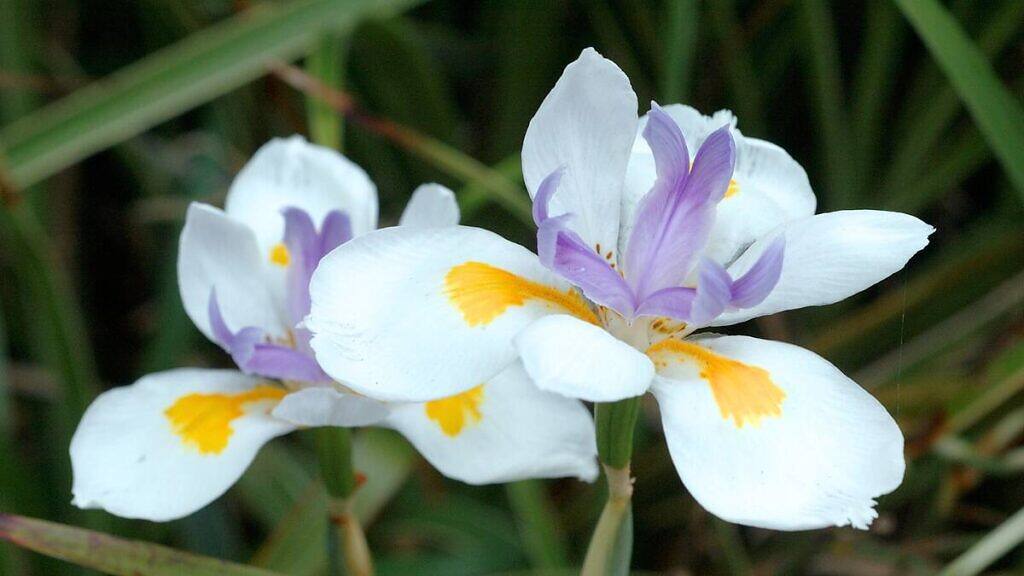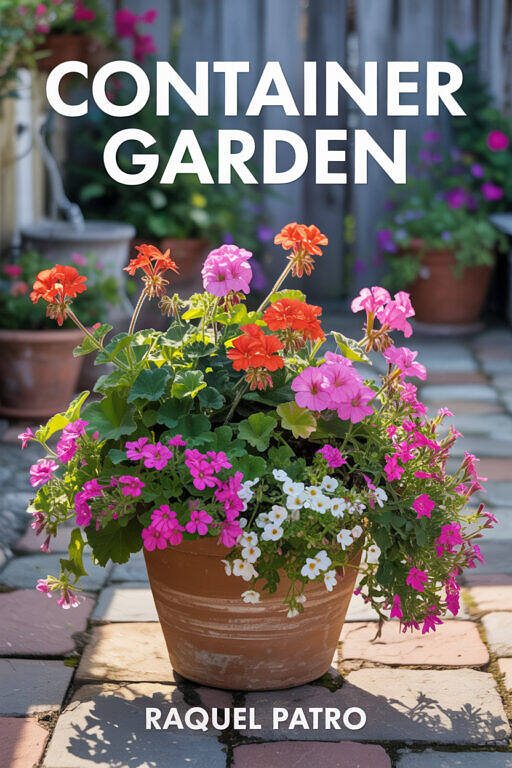The Fairy Iris (Dietes grandiflora), also known as large Wild Iris, is a perennial, rhizomatous plant highly valued in landscaping for its showy flowers and ornamental foliage, but especially for its low maintenance requirements. Widely used in public gardens, commercial areas, urban flower beds, and along roadways, the Fairy Iris stands out for its drought and frost tolerance, as well as for being easy to care for. Its ability to form dense clumps and bloom profusely throughout spring and summer makes it a frequent choice in landscape projects for subtropical and tropical regions, particularly in South Africa, Australia, and North America.
The Fairy Iris is notable for its ability to bloom in short cycles, often at intervals of about two weeks during the spring and summer, which has earned it the popular name “fortnight lily” in English-speaking countries. Its delicate flowers, lasting only two to three days, are quickly replaced by new blooms, creating an almost continuous display under ideal conditions. The scientific name Dietes grandiflora derives from the Greek ‘di-‘ (two) and ‘etes’ (relatives), referring to the genus’s relationship with Moraea and Iris. The specific epithet ‘grandiflora‘ means ‘large flower,’ highlighting the size of its inflorescences, the largest within the Dietes genus.
Native to South Africa, the Fairy Iris is naturally found along the eastern and southern coastal regions, including the Eastern Cape and KwaZulu-Natal provinces. Its typical habitat includes forest margins, exposed slopes facing the ocean, and areas sheltered by taller shrubs. The species thrives in both sunny and partially shaded environments, adapting well to well-drained soils rich in organic matter. Although endemic to South Africa, it has been successfully introduced to other tropical and subtropical regions due to its hardiness.

Dietes grandiflora is a perennial, herbaceous, rhizomatous plant that forms dense, voluminous clumps. It typically grows between 3 and 4 feet tall (90 to 120 cm), with an average spread of 2 to 3 feet (60 to 90 cm). Its root system is fasciculate, typical of monocots, with thick underground rhizomes that enable vegetative propagation and the formation of large groupings. The true stem is reduced and underground, while the visible aerial structures are made up of leaves arranged in a fan shape. Fairy Iris grows rapidly under favorable conditions, spreading laterally through division of the rhizomes.
The leaves of Dietes grandiflora are evergreen, linear, and rigid, sword-shaped (ensiform), and form dense vertical fans. They have a deep green color, a smooth and glossy surface, and no visible fuzz. The leaves do not have a defined petiole, emerging directly from the rhizome; they feature a pronounced central vein and entire edges. Leaf length ranges from 24 to 39 inches (60 cm to 1 m), with a width of 0.6 to 0.8 inches (15 to 20 mm). Their leathery texture and firmness provide notable resistance to drought and wind.
Fairy Iris is a monoecious species that produces hermaphroditic flowers in terminal inflorescences borne on upright flower stalks. Blooming occurs mainly in spring and summer, especially after heavy rain. The inflorescences consist of long stems holding single flowers or small clusters above the foliage. Flowers are large—up to 4 inches (10 cm) in diameter—radially symmetrical, and feature six tepals: three outer white tepals with yellow blotches at the base and three inner white tepals marked with violet details. The blooms are not noticeably fragrant.

Pollination is carried out mainly by insects (entomophily), which are attracted by the contrasting colors of the petals and nectar guides. The fruit is an elongated, upright dehiscent capsule—up to 1.6–2 inches (4–5 cm) in length—green when unripe and turning brown as it matures. The capsule is not considered particularly ornamental. Seeds are numerous, small, shiny, dark brown to black, and are naturally dispersed when the mature capsule opens.
There are also two notable cultivars of Dietes grandiflora. One is the ‘Dwarf Lemon Drops’ cultivar, a dwarf form distinct from the common species, whose flowers display soft, pale yellow markings and lack the striking purple coloring on the inner tepals, standing out beautifully amid the green foliage. The variegated form of Fairy Iris features leaves with creamy or white stripes or borders, creating a bright, striking effect, especially when planted in groups. These varieties retain the robust growth and resilience of the original species, while adding extra color and appeal to landscape designs.
It’s very easy to confuse the different species of Dietes, since they all have a similar appearance at first glance, but a few details make identification much easier. Dietes grandiflora, known as Fairy Iris, stands out for its larger flowers, which can reach up to 4 inches (10 cm) in diameter. The blooms are usually white with dark spots at the base of the outer petals and have the advantage of staying open longer—up to three days. In contrast, Dietes iridioides (Fortnight Lily) produces smaller white flowers without those dark markings, and these only last for a day. Additionally, this species forms a lower and denser clump. Finally, Dietes bicolor (African Iris) is easy to identify: its flowers are yellow or cream with purple spots surrounded by an orange hue, and the leaves are thinner and gracefully arching. Paying attention to these features makes it much simpler to distinguish the various types of Fairy Iris in the garden.

In contemporary landscaping, Dietes grandiflora or Fairy Iris is widely used in mass plantings or borders due to its fan-shaped, rigid foliage and the abundance of white flowers with yellow and purple highlights. Its hardiness makes it a great choice for large areas such as public beds, roadside embankments, and corporate gardens, where it stands out for its low maintenance requirements as well as its tolerance to drought and light frost. In residential gardens, it is often used to create striking vertical texture or to define walkways and circulation areas.
Large wild iris, or Fairy Iris, can also be grown in large pots or deep planters to showcase its upright growth near entrances or patios. Its ornamental impact is heightened when planted in dense groups, forming a natural bouquet during the bloom period. It pairs well with ornamental grasses or tropical plants that contrast with its linear leaves. Despite the striking beauty of individual Fairy Iris flowers, they are not recommended for floral arrangements due to their short vase life. In addition, this species can serve as a lightweight visual barrier or as an attractive feature for pollinators in ecological designs.
Fairy Iris adapts very well to full sun, where it reaches its peak flowering, but it also tolerates partial shade, although this significantly reduces the number of blooms. Fairy Iris prefers subtropical and tropical climates, showing resilience to both heat and brief periods of moderate cold. It tolerates temperatures between 50°F and 86°F (10°C and 30°C) and can occasionally withstand light frosts, though prolonged or severe cold may cause leaf damage. This species also demonstrates strong resistance to maritime conditions and coastal winds, making it a suitable choice for seaside gardens. In areas with deep shade, the vegetative growth of Fairy Iris continues, but significant flowering is unlikely.
The ideal cultivation of Fairy Iris requires well-draining soil, light to moderately clayey, rich in organic matter, and with a slightly acidic to neutral pH (6.0–7.0). When grown in containers, use a potting mix with equal parts garden soil, coarse sand, and organic compost to ensure proper drainage. Fairy Iris benefits from regular watering during the warmest or driest months, keeping the soil slightly moist but never soggy. Thanks to its rhizomatous root system, the plant tolerates short periods of drought. Overwatering should be avoided, as it can lead to rhizome rot—never plant in compacted or poorly draining soils.
For garden planting, dig holes larger than the root ball and enrich the soil with well-composted organic matter. An annual application of organic compost or a balanced NPK fertilizer (10-10-10) is recommended, preferably at the beginning of spring. Pruning should be limited to removing dried or damaged leaves, and cutting back the flower stalks after fruiting helps maintain vigor and ornamental appeal. Applying mulch (mulching) is beneficial for conserving moisture and suppressing weeds. When growing Fairy Iris in pots, replace part of the potting mix each year to keep the plant healthy.
Dietes grandiflora shows high resistance to most common pests and diseases in ornamental gardens. Fairy Iris is rarely affected by sap-sucking or chewing insects; infestations by scale insects or slugs may occasionally occur in very humid environments. Preventive practices include regularly inspecting clumps and removing pests by hand at the first sign of infestation. Deer and rabbits generally avoid Fairy Iris due to its tough, leathery foliage.

The most effective propagation method for Fairy Iris is by dividing mature clumps after the main flowering period, preferably in fall or early spring. Separate the rhizomes, ensuring each has at least two leaves, and plant them immediately in their final location or in individual pots with fresh potting mix. Propagation by seed is also possible: collect the ripe capsules, extract the seeds, and sow them superficially in trays at cool temperatures (55–59°F / 13–15 °C), maintaining consistent moisture until germination. Fairy Iris plants grown from division typically bloom in the first year after planting, while those grown from seed generally flower two to three years after germination.



